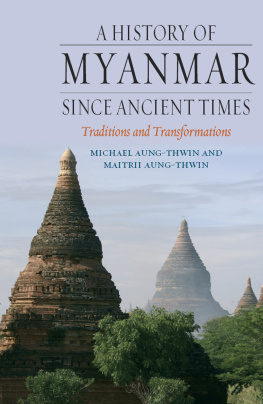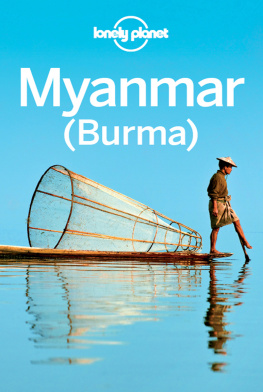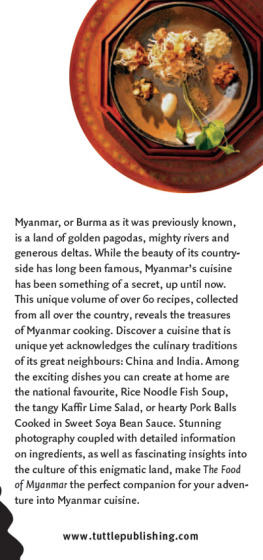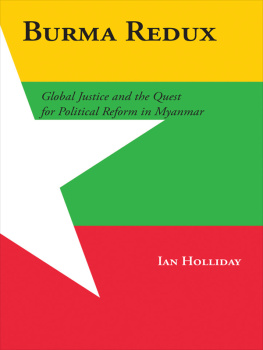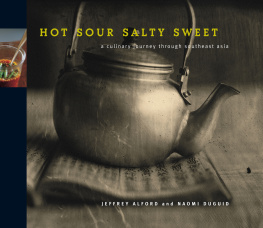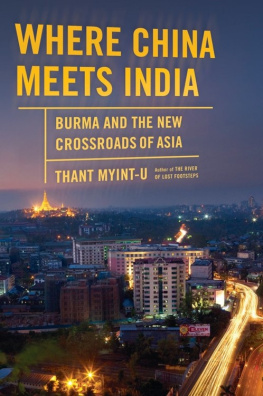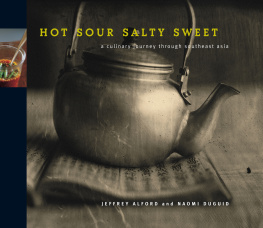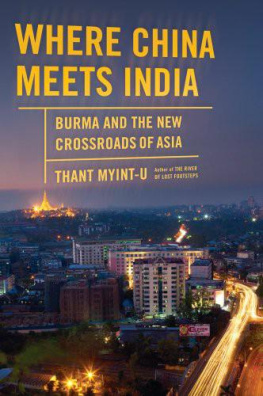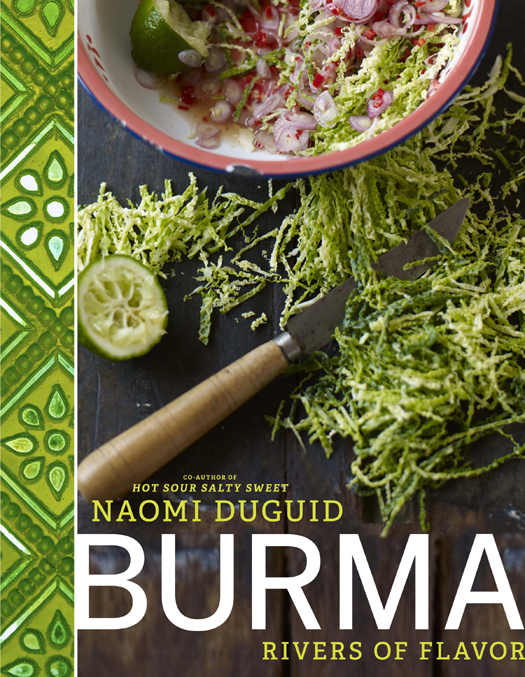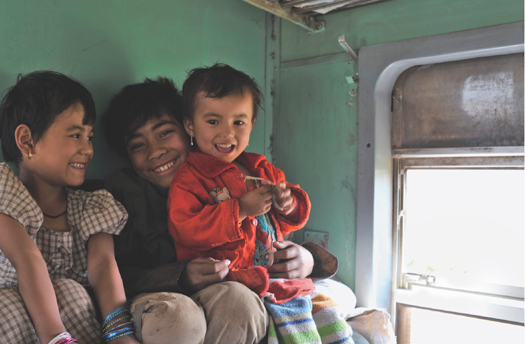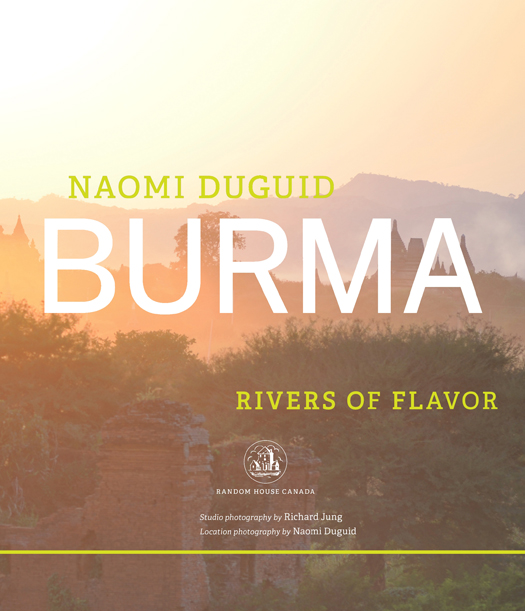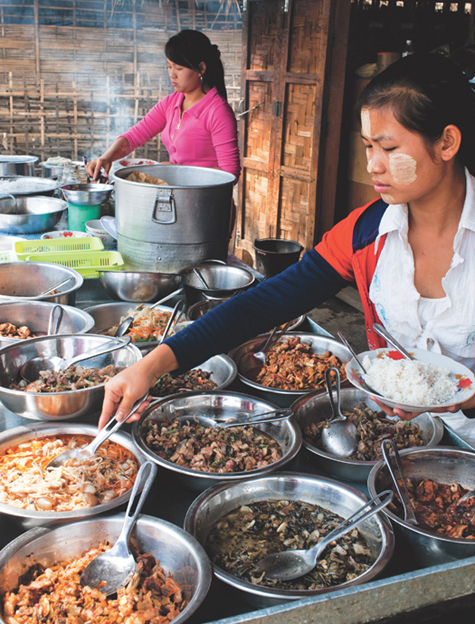Children in a train compartment, traveling back to Mandalay from a festival in Lashio.
ALSO BY NAOMI DUGUID
(all cowritten with Jeffrey Alford)
Beyond the Great Wall:Recipes and Travels in the Other China
Mangoes & Curry Leaves:Culinary Travels Through the Great Subcontinent
Hot Sour Salty Sweet:A Culinary Journey Through Southeast Asia
Seductions of Rice
HomeBaking:The Artful Mix of Flour and Tradition Around the World
Flatbreads and Flavors:A Bakers Atlas
PUBLISHED BY RANDOM HOUSE CANADA
Text copyright 2012 Naomi Duguid
Location photographs copyright 2012 Naomi Duguid
Studio photographs copyright 2012 Richard Jung
Map copyright 2012 by Michael Newhouse
All rights reserved under International and Pan-American
Copyright Conventions. No part of this book may be reproduced
in any form or by any electronic or mechanical means, including
information storage and retrieval systems, without permission
in writing from the publisher, except by a reviewer, who may
quote brief passages in a review.
Published in 2012 by Random House Canada, a division of
Random House of Canada Limited, Toronto, and simultaneously
in the United States of America by Artisan, a division of
Workman Publishing Company, Inc., New York. Distributed in
Canada by Random House of Canada Limited.
www.randomhouse.ca
Random House Canada and colophon are registered trademarks.
Library and Archives Canada Cataloguing in Publication
Duguid, Naomi
Burma : rivers of flavor / Naomi Duguid.
Includes index.
eISBN: 978-0-307-36217-9
1. Cooking, Burmese. 2. BurmaDescription and travel. I. Title.
TX724.5.B93D85 2012 641.59591 C2012-902064-8
Food styling by Linda Tubby
Jacket photographs by Richard Jung (studio food) and Naomi Duguid (location)
v3.1
(): Ruins at sunset on the plains near Bagan.
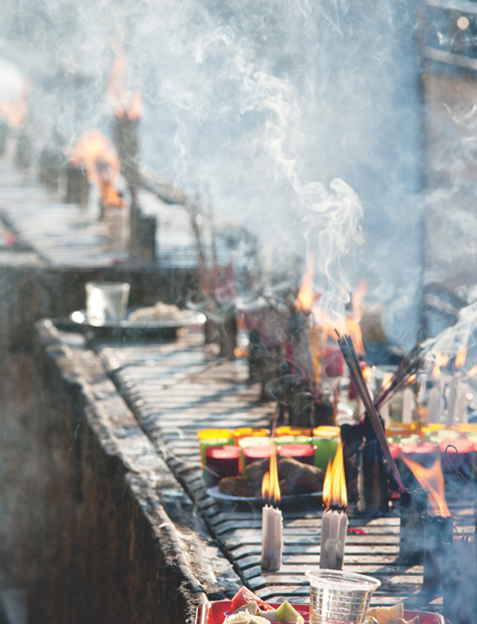
Offerings at Shwedagon, a temple complex in Rangoon.
To the people of Burma, whose resilience in hard times, and generosity to a stranger, are remarkable and moving. And to Dom and Tashi and my extended family of friends, with love and thanks.
Bicycle and shopfront in the early morning, central Hsipaw.
CONTENTS
PREFACE
One of many roadside restaurants in Kachin State, between Myitkyina and Bhamo. When the buses stop every day around noon, the women hurry to feed passengers their rice meal from a huge array of prepared curries, salads, and condiments.
THIS BOOK CELEBRATES THE CULINARY CULTURE and traditional foodways of Burma, using recipes, stories, and photographs to engage with life there in all its richness, both in the kitchen and out.
My first trip to Burma was in 1980. Nine years later, I went from Thailand into a border area controlled by the Karen Independence Army, and in 1998 I traveled to Shan State and Mandalay. Since starting work on this book in late 2008, Ive made many more trips into Burma. Ive spent time in Rangoon but have also been able to travel widely around the country. Ive slowly gained an understanding of the local food by hanging around: photographing; eating (and eating!) in markets, tea shops, and small restaurants; and having conversations with people.
For more than twenty years, Ive been exploring food as an aspect of culture. Ive co-authored six cookbooks that focus on home cookingin the Indian Subcontinent, in the outlying areas of China, and in the Mekong regionand also on staple foods such as flatbreads and rice. In my travels for those books Ive learned how to be a beginner in a new place, slowly starting to decipher how things work, what the patterns of daily life and food might be.
When I poke around in a market with my camera, taking shots to remember what produce is there or the techniques used by a street vendor, people in Burma are often cautious at first. They wonder why I am photographing everyday items like piles of shallots or rice or leafy greens. But they soon get used to me. And once they feel at ease, I can start asking questions about the food: how and where its grown, how its prepared, and so on. Tea shops have open kitchens, as do most small restaurants, where I can watch and learn. Occasionally I have been lucky enough to be in the kitchen of a private house, invited by a friend, or brought along by a cousin.
Im now hooked, not just on Burmese food, but also on the country. Im convinced that the more foreigners who travel to Burma mindfully, the better. The country is opening to democracy after having been closed off by repressive government policies for several generations, and the political picture is improving. People in Burma are now optimistic about the future. Theyre happy to have a chance to engage with the outside world.
You may want to use this book just for armchair travel and cooking. However, Im hoping that the stories, recipes, and photographs give you a sense of personal connection to the people of Burma and an urge to go and meet them and see their country for yourself.
INTRODUCTION
SHAPED LIKE A KITE WITH A LONG TAIL, Burma is the largest country in mainland Southeast Asia. It lies between the giants of AsiaIndia and Chinaand it has a long border with Thailand. For centuries its been a cultural crossroads, a destination for traders and travelers from India and China and the rest of Southeast Asia. Buddhism traveled here from India about two thousand years ago and then spread eastward. The Mongols invaded Burma in 1271, then retreated back to China.
In this well-watered land of huge rivers and fertile valleys, kingdoms flourished and distinctive food traditions developed over the centuries. As a result, Burmas culinary scene today is rich and multilayered. From the brilliant salads, sparkling condiments, and easy curries of the Bamar people living in the central river valleys, to the inventive aromatic dishes of the peoples in the hills, Burma has a mother lode of delicious and accessible food traditions.
In the last 150 years, the people of Burma have seen invasions, conquests, war, and civil strife. Through it all they have maintained their culture, their pride, and their sense of self-respect. But the news stories Westerners read about Burma deal with large-scale events and rarely touch on the warmth and humanity of individuals.
Let me take you there, to that more personal layer of life in Burma. Food is an inextricable part of daily life and local culture everywhere in the world, and as an artist friend said to me a couple of years ago, Food is the last refuge. The kitchen and the dinner table are places where people can relax and feel safe, where they can take a break from the challenges of the world outside. Thats especially true for people in Burma, where government has until recently been more of a threat than a support. So the Burmese army and government are not invited into the kitchen in this book, nor will you find discussions of human rights mixed in with the recipes here.



